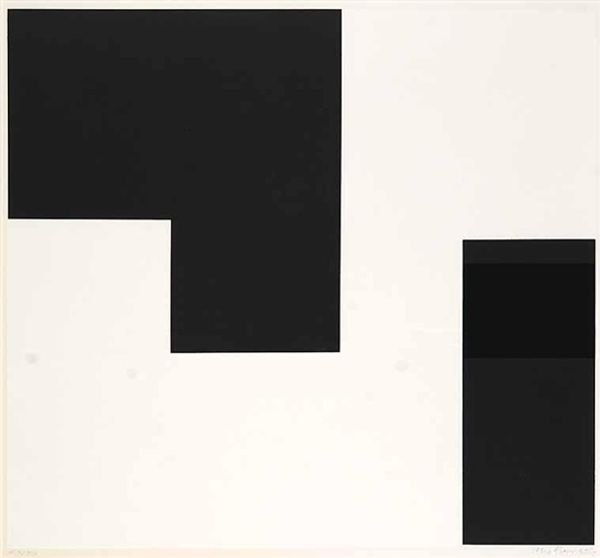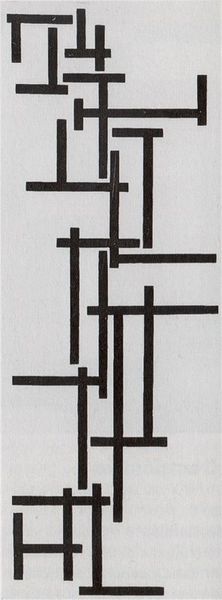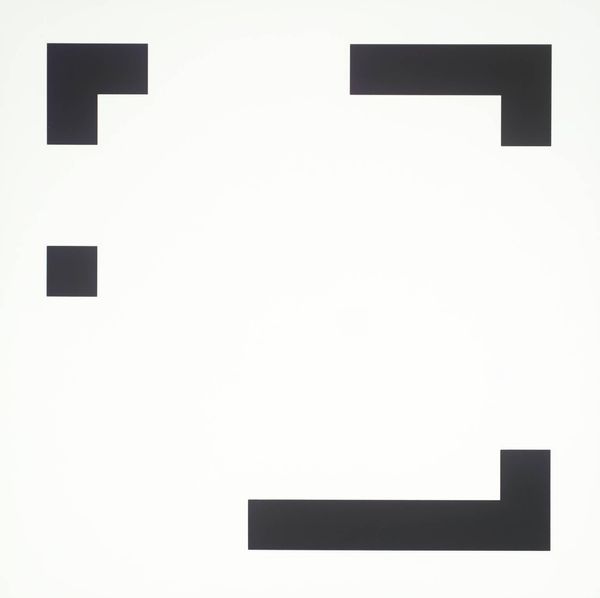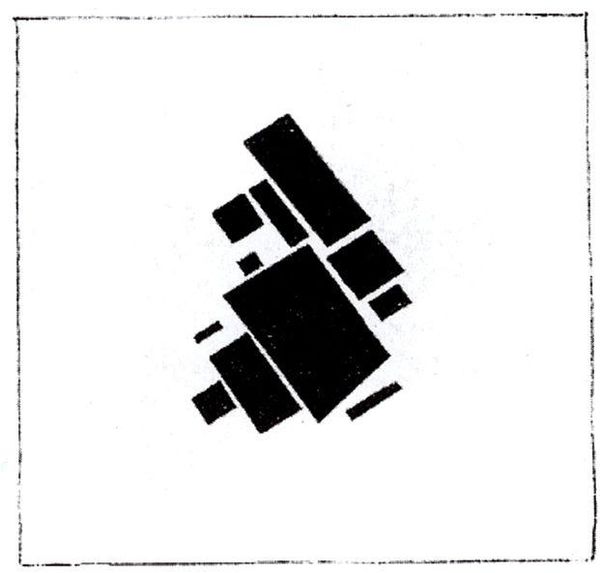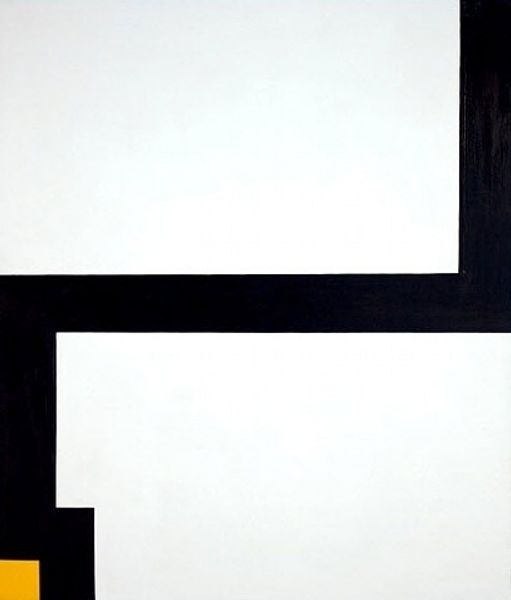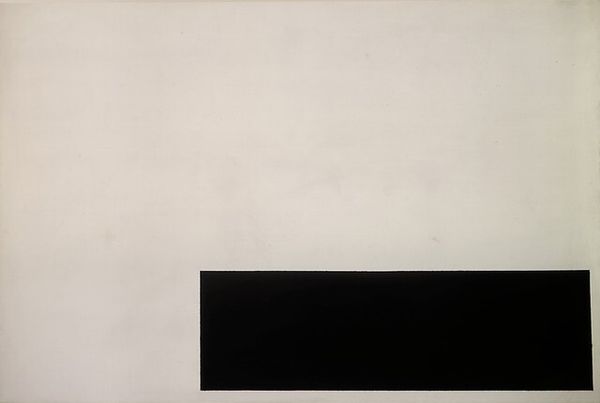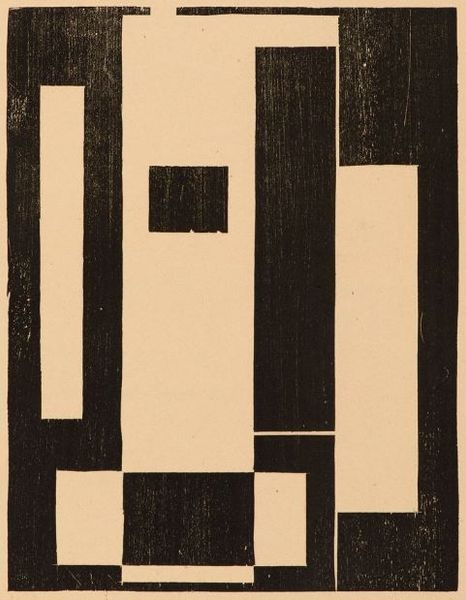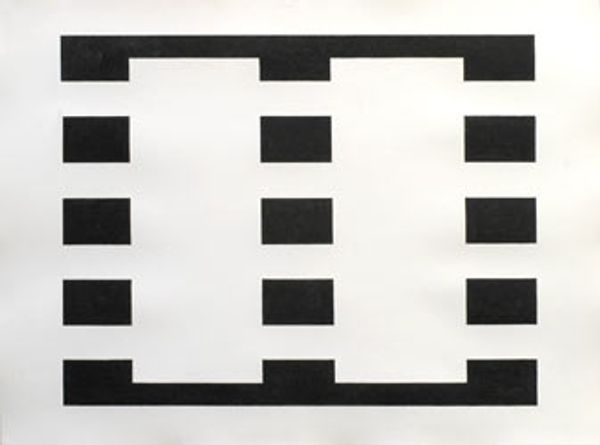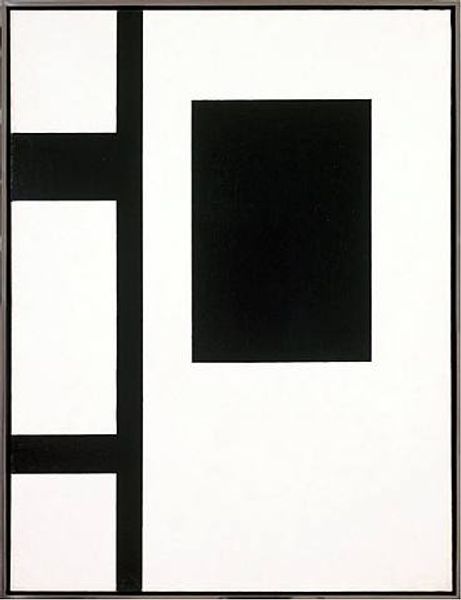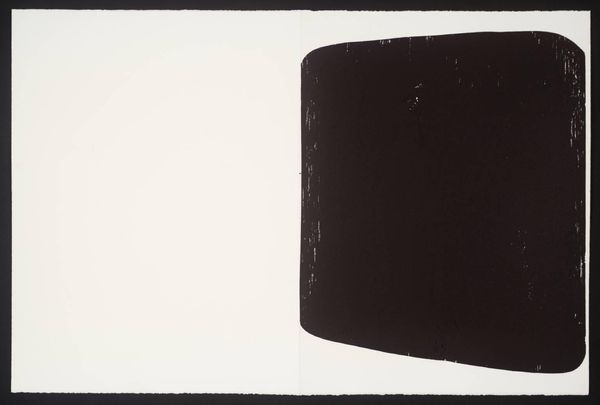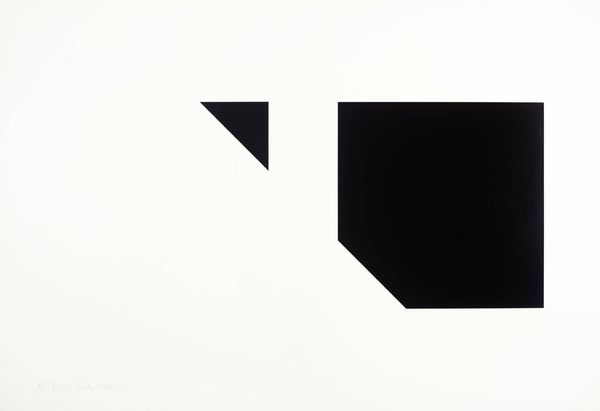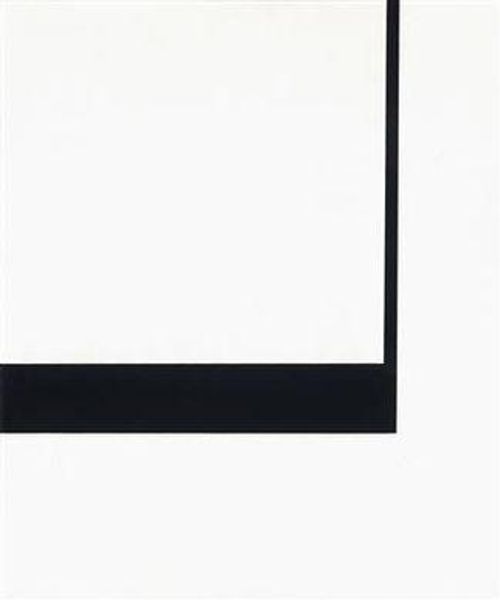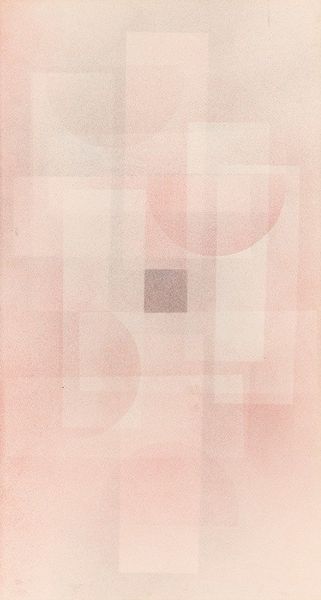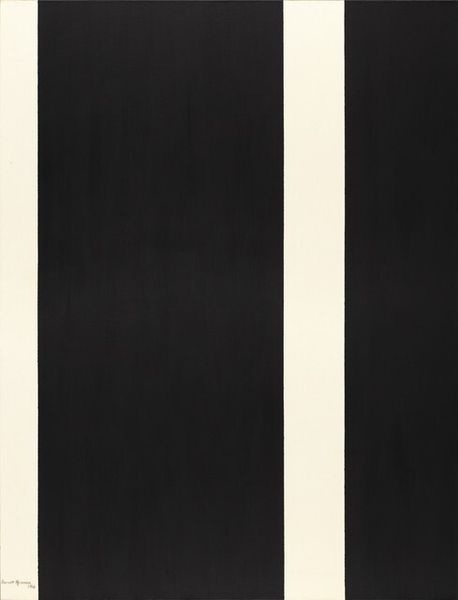
acrylic-paint
#
abstract-expressionism
#
minimalism
#
op art
#
typography
#
acrylic-paint
#
form
#
rectangle
#
geometric-abstraction
#
abstraction
#
line
#
hard-edge-painting
#
monochrome
Copyright: Guido Molinari,Fair Use
Curator: This stark piece before us is Guido Molinari's "Angle Noir," created in 1956 using acrylic paint. It exemplifies his explorations into geometric abstraction. Editor: My initial feeling? Controlled tension. The bold, flat shapes, seemingly simple, create a palpable unease through their precise yet asymmetrical placement. Curator: Precisely. Molinari's strategic use of black and white speaks to the duality present in so much of our lives. Light and darkness, presence and absence. Editor: And beyond mere duality, I see a kind of dialogue. The shapes almost seem to be confronting each other, vying for dominance on the canvas. A visual representation of conflict, perhaps. This was during a time of immense political change after all. Curator: Yes, that tension resonates with the societal anxieties of the mid-20th century, absolutely. But it also echoes older traditions – consider how monochrome icons, for instance, focus the viewer's mind. Here, the pared-down nature urges deeper contemplation on what "form" itself represents. Editor: That makes me consider how the rigidity and minimalist form are rejecting any romanticized representation. Is there a link to, or rebellion from, any of the movements growing in that period? What's the historical narrative it contributes to, versus perhaps a more detached appreciation of visual form and pattern. Curator: Hard-edge painting had started only a few years prior, in the late 1950s, meaning Molinari had developed the groundwork a few years earlier. There’s also the dimension of 'optical art' – op art – it makes use of. Molinari is setting us up, not with illusions in quite the same way as others in the later style. This piece presents an environment within a set field, offering pathways but also stark barriers. Editor: Agreed. It certainly feels forward-thinking in its starkness. By stripping down to pure form, Molinari creates a potent symbol for how change impacts social identity. Curator: Exactly. By leaving behind realism and embellishment, it directs our gaze inward and onward. Editor: Ultimately, “Angle Noir” forces us to confront simplicity's complex truths. Curator: A powerful piece indeed, even after all these years. It speaks of contrasts, challenges, and enduring questions.
Comments
No comments
Be the first to comment and join the conversation on the ultimate creative platform.
